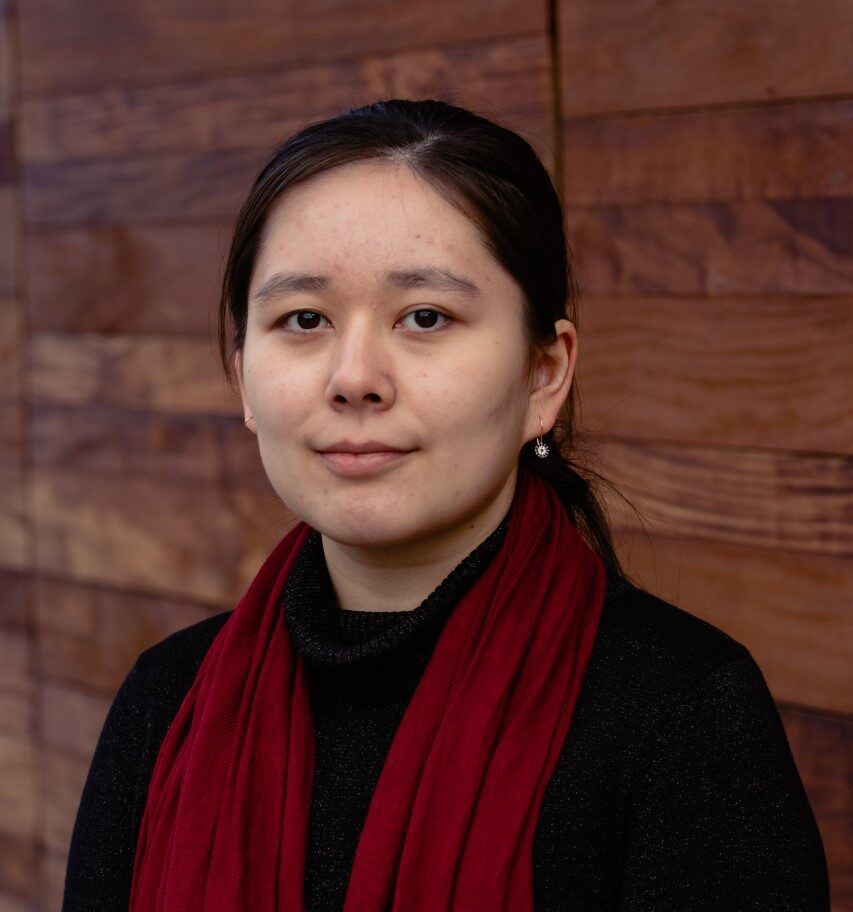
Control of Stemness in Glioma via Nanoparticle-Mediated Regulation of CD44 Receptor
Glioblastoma, also known as glioma or GBM, is the most common and aggressive malignant primary brain tumor which continues to puzzle researchers as decades of efforts to find an effective therapy has proven to fail. Barriers to success of the available treatment include impermeability of the blood brain barrier (BBB) to drugs, tumor heterogeneity, and existence of aggressive and resistant Tumour Initiating Cells (TICs). Collaborative studies in our lab show that conjugated polymer nanoparticles (CPNs) can serve as a potential therapeutic approach to overcome these barriers. CPNs are labeled with hyaluronic acid (HA-CPNs) which is a ligand for one of the most prominent receptors found on TICs, CD44. Our data to date has demonstrated that HA-CPNs cause selective decrease in proliferation, migration potential, and expression of markers of aggressiveness and self renewal in CD44+ glioma cells. This study investigates the mechanism by which HA-CPNs exert their effects and how the uptake of the nanoparticles is regulated. We study the status of CD44 receptor on the protein and mRNA levels as well as how manipulation of its levels affects glioma aggressiveness. We explore inhibition of Clathrin Mediated Endocytosis as responsible for the uptake of HA-CPNs and use it to validate selected effects of HA-CPNs. This work will reveal molecular mechanism behind HA-CPN anti-glioma effects which will further contribute to more in- depth evaluation of this nanoparticle system as a potential therapy for patients with GBM.
“Since joining Porter Lab in my second year of undergrad, I would have never thought this experience would have been so rewarding. Before my time in the lab, I had little knowledge of what the research side of academia was like. Through the COVID-19 pandemic, I found myself thinking largely about my future and through working in the lab via virtual platforms and maintaining my interest in research, I began my thesis in my forth year in person. Although this experience was such a learning curve, I have never been so appreciative and lucky to have this opportunity. Learning and gaining valuable skills in the lab such as trouble-shooting, team work, and resiliency, I can honestly say research has become such a passion of mine.
In my time in Porter Lab, I have created so many friendships with my fellow lab mates that I know will last forever. If you asked me in my first year what I thought I would accomplish during my undergrad, I would have never thought I could say that on a micro level, I am contributing to the advancement of cancer research in my community. I am excited to pursue my masters degree in biological sciences with Porter lab and eager to see all the change each and every member contributes to cancer research.”

Novel Cell Cycle Therapeutic Strategy Against Type II Medulloblastoma
Medulloblastoma (MB) is one of the most common malignant brain tumours, occurring mainly in children between the ages of 1 to 9 years. The standard of care which is currently being applied for MB includes combination of radiation, surgery, and chemotherapy. This treatment is aggressive and is only effective for a small percentage of patients due to the presence of aggressive and therapy resistant populations of Tumour Initiating Cells (TICs). A recent approach in clinical trials is the use of cell cycle regulator proteins, CKIs, which are synthetic cyclin-dependent kinase inhibitors. Our lab focuses on a specific cell cycle regulatory protein, Speedy (Spy1) which promotes proliferation and overrides cell cycle checkpoints established by natural CKIs. Spy1 plays a role in the maintenance and expansion of stemlike populations of TICs in different types of brain tumour. It is our hypothesis that Spy1 can drive tumour initiating cells in medulloblastoma in face and despite ongoing therapy. In this study we investigate and reveal the role of Spy1 in MB in response to known therapeutic agents and Spy1 mediated effects on the dangerous TIC populations in the treatment setting. In addition, Sonic hedgehog (Shh) MB, a type 2 medulloblastoma, is studied and manipulated to assess potential effects of Shh pathway in the regulation of Spy1. This project is the first one to demonstrate that standard of care treatment of MB leads to increased levels of Spy1 and selection of resistant TIC populations. We show that a key molecular driver in MB plays a role in the regulation of Spy1 levels which is an important finding in further studies seeking for novel effective therapeutic strategies against MB. Overall, my project will contribute to better understanding of the role of Spy1 in MB and its application as a potential therapeutical target in the future.
“Joining the Porter Lab at the end of my first year was the best decision I made in my University experience; it was life changing. I met a lot of amazing, professional and talented people that I am proud to call them my family now. I gained a lot of unique skills like patience, problem solving and critical thinking in addition to a lot of new techniques. I learned to never give up and most importantly passion in cancer research as without hope there is no meaningful research. My work in the lab was affected by Covid-19 but with the help of Dr. Porter, the RAs, the grad students and the mentor network I was able to overcome many challenges. We are a true family that stands which each other. Joining the Porter Lab helped me better understand the importance of cancer research and value the importance of hard work. My experience in the lab helped realize that I want to pursue a career that involves research in the future. I learned something new every minute I spent in the lab and this experience increases my desire in continuing to learn more and more every day. I am very grateful for my experience in the Porter Lab and I am proud to call myself a Porter Lab rat.”

The Role of Tuberin in DNA Damage Repair During Cell Proliferation
The cell cycle contains DNA damage checkpoints that delay mitotic progression and allow for DNA repair before cell division. DNA damage can be caused by radiation, drugs, and other processes which lead to cellular mutations and carcinogenesis. The tumour suppressor protein p53 is activated in the presence of DNA damage. It induces apoptosis or cell cycle arrest which allows cells to repair themselves. Tuberin (TSC2), another tumour suppressor protein, regulates the G2/M transition in the cell cycle and negatively regulates protein synthesis and cell growth. Mutations in tuberin can lead to the multisystem autosomal dominant disease known as tuberous sclerosis (TSC). Previously, our lab has shown that Tuberin regulates mitotic onset through cellular localization of the G2/M Cyclin, Cyclin B1. My project focuses on the Tuberin/Cyclin B1 complex in relation to G2/M arrest and DNA damage repair. In this study, we will overexpress Tuberin-WT and Tuberin clinical mutants in NIH-3T3 (mouse) and U2OS (human) p53 wild type cells. Etoposide, a topoisomerase II drug, will be used to induce DNA damage. Cells will then be analyzed by flow cytometry, TUNEL assay, and western blot to assess their cell cycle profile, apoptotic levels, and protein expression. Using CRISPR-Cas9 technology, a NIH-3T3 null TSC2 cell line will be created to clarify the role of Tuberin during DNA repair. Preliminary results have determined that 4μM of etoposide treatment at 8 hours arrests 50% of NIH-3T3 cells at G2/M. This project will provide greater insight into DNA damage induced carcinogenesis, TSC, and other proliferative diseases.
“Joining the Porter lab in my first year has been one of the most rewarding experiences of my undergraduate career. Not only was I able to learn about advanced scientific techniques in class, but I was able to put them in action throughout my own research in lab. The problem-solving, critical thinking, and hands-on techniques I learned during my thesis are skills that I will carry forever. I was also lucky enough to make life-long friendships during my research journey. There were some challenging moments, but I could always rely on my lab team members and mentors to guide me. The last three years have been an amazing experience, and I wish the best for the next team of brilliant undergrads.”

